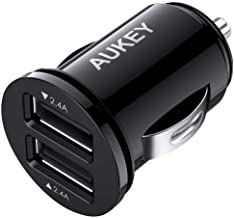Table of Contents
charging your phone
Keeping a phone or tablet1) charged is an essential task for vehicle dwellers. It's more an issue of resource management (taking advantage of charging opportunities, carrying the chargers/cords) rather than spending money on special gear.
charging methods
 Charging a phone is a relatively simple task while living in a vehicle; it requires no expensive equipment. All other loads (like charging laptops) will be more complex.
Charging a phone is a relatively simple task while living in a vehicle; it requires no expensive equipment. All other loads (like charging laptops) will be more complex.
The simplest approach is to charge the phone from cigarette port usb outlet while doing our normal driving. Some ports are powered with the ignition off but many will require the key to be on. Newer vehicles may have USB outlets built in directly, although the ignition issue may still apply.
If you have access to normal wall power at home, work, etc, it may be easier to charge from a "wall wart" usb charger there, or charge a small usb power brick you can use to charge the phone later. This device, for example, acts as both a USB charger and a hand warmer for cold nights.
Solar USB chargers can free you from wall power but are more expensive and typically low-powered. They might be be charged from wall power then augmented with solar.
If you do use one, be aware that heat (as from the sun) is not good for battery life. If you use one of these try to limit the amount of heat they experience. If you are charging a phone from the device while solar charging try to keep the phone completely out of the sun to avoid heat damage to the phone.
Being behind windshield glass will reduce power harvest by about 50%, so place them outdoors if possible.
Jackery-type devices are typically massive overkill for charging phones, but if you already own one they will work well for charging the phone.
extending battery life
- charge any time you can!
reduce screen brightness
- reduce screen timeout until turning off
- remove battery hog applications (often identifiable from the Battery statistics screen)
- turn on Battery Saver options, if present